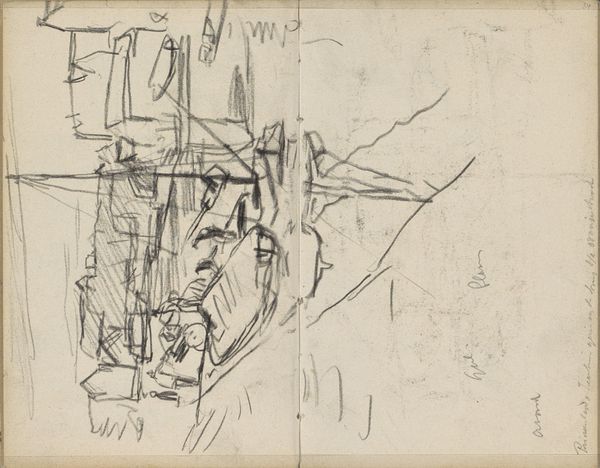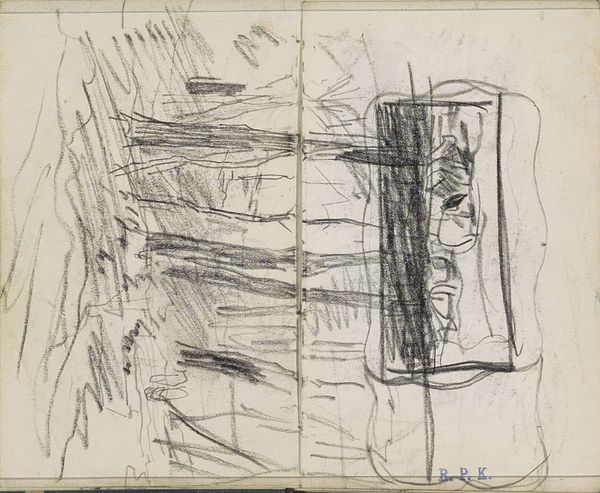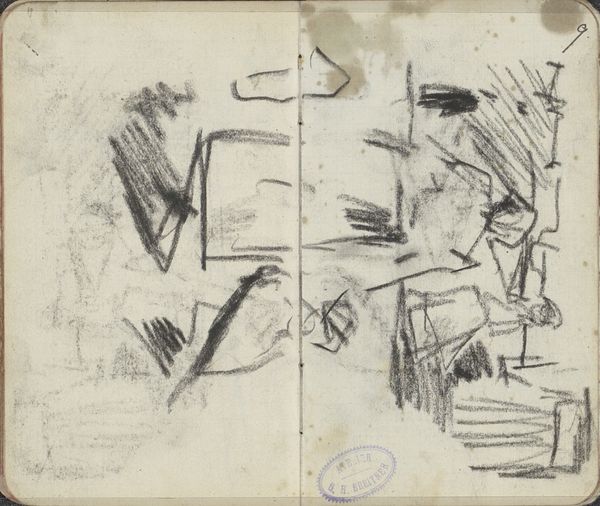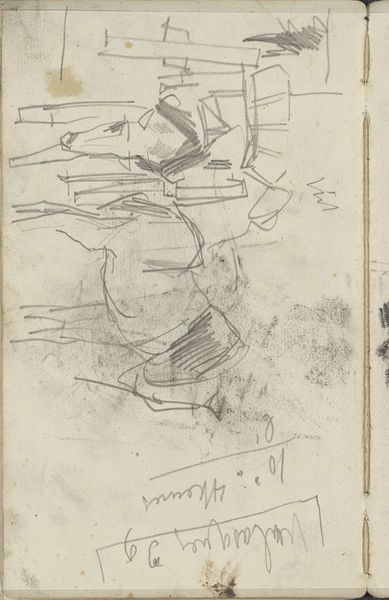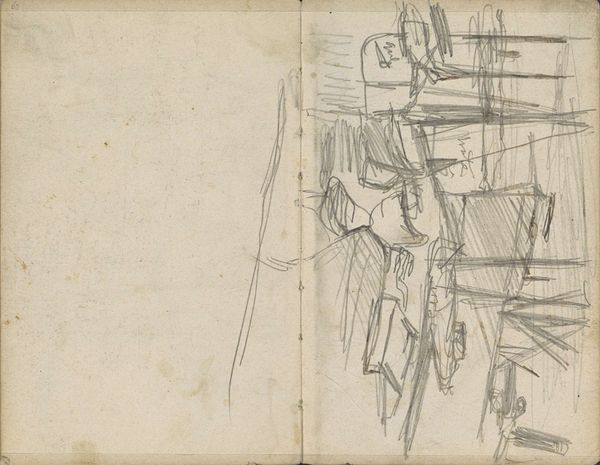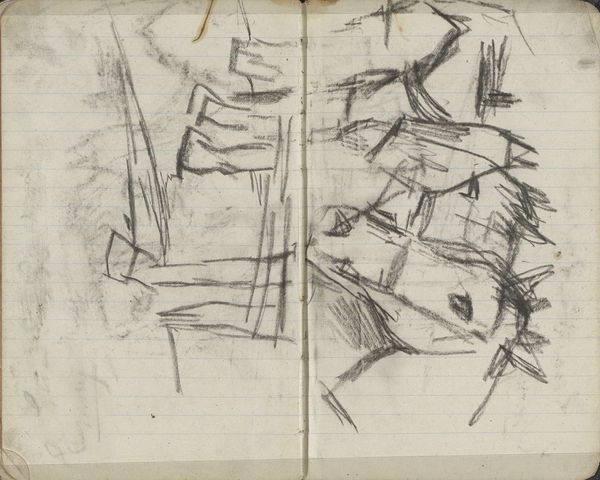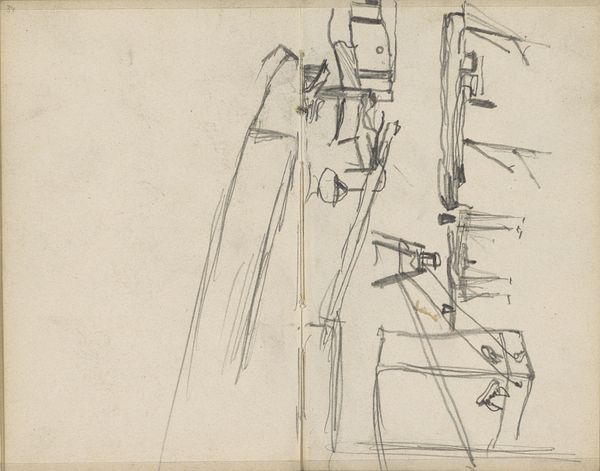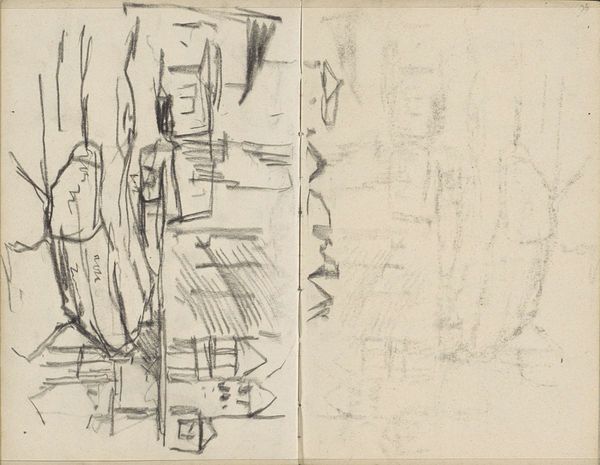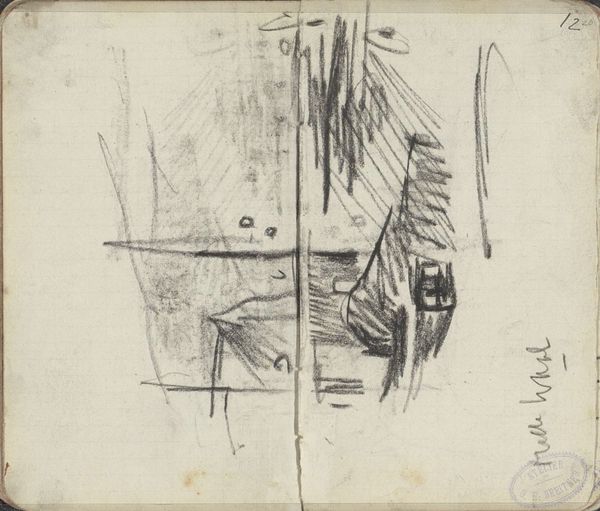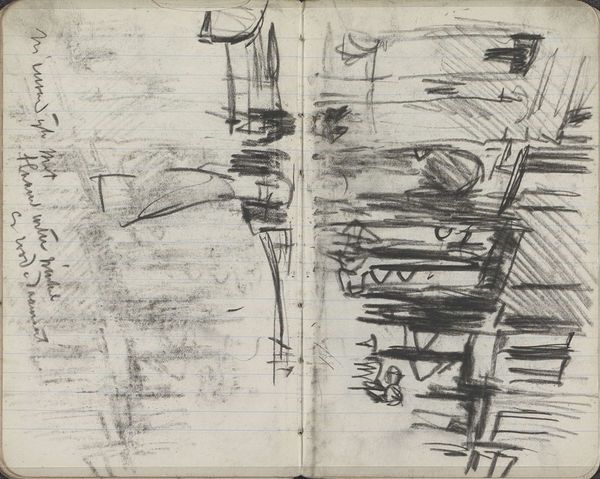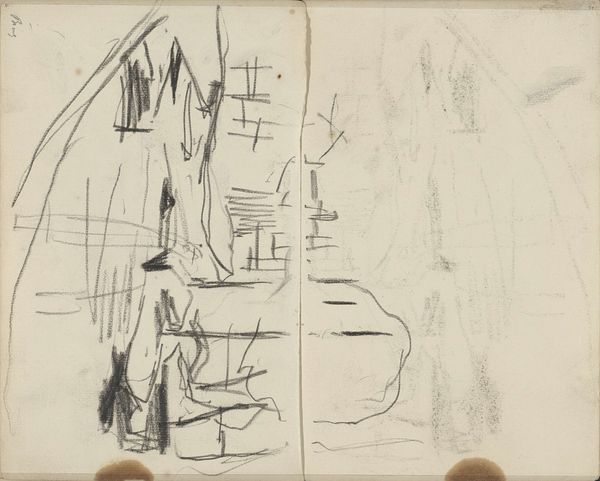
Copyright: Rijks Museum: Open Domain
Curator: Here we have a quick sketch by George Hendrik Breitner, a Dutch artist known for his impressionistic cityscapes. This one, from around 1893-94, is entitled "Paardentrams, mogelijk op de Dam te Amsterdam," which translates to "Horse-drawn trams, possibly on the Dam Square in Amsterdam." It's rendered in charcoal on paper. Editor: My first impression is… unfinished, but in a good way. It has a raw, energetic quality. The charcoal strokes are so loose; it's more like an impression of movement and form rather than a detailed depiction. The composition makes it seem as if things are fleeting, maybe the quick experience of an artist sketching on the go. Curator: That impression of immediacy is key to understanding Breitner. He was very much engaged with capturing modern urban life. These rapid sketches were his way of documenting the everyday dynamism of Amsterdam, very much attuned to the social climate of the city as the industrial revolution unfolded. Think about the political significance, the everyday subject of labor within quick moving industry that Breitner is emphasizing. Editor: Yes, it makes me think about transience and industry. There's a ghostliness to it. The horse-drawn trams—we know the horse is such an age-old symbol and has had deep meaning in civilizations across time—now here, those lines almost feel like spirits amongst these emerging city structures. Curator: That sense of ghostliness speaks to the changing landscape of Amsterdam at the time. Horse-drawn trams were becoming increasingly common, signifying progress and modernization, but the sketch format preserves it within an artifact-like medium. These lines represent a real time snapshot. What symbols emerge from such new methods of travel and transport? Editor: And there’s also a personal element that seems like the artist is taking into account their own perspective to emphasize what details they feel relevant to the moment in history. The fleeting tram and figures fade so quickly into abstracted form, almost mirroring the transient human memories we develop over time of our collective urban and social landscapes. Curator: Right, and beyond his sketches, Breitner engaged heavily in photography and emphasized documenting social realism around the city; these were a very pointed rejection of idealism and of academic art at the time, reflecting this cultural shift to celebrate lived urban experiences, not through some nostalgic lens but through realism and change. Editor: So true. In conclusion, Breitner gives us both the solid forms of transit but it is made from a charcoal that allows him to capture not just historical symbols in motion but human, social life constantly in motion and undergoing transformation.
Comments
No comments
Be the first to comment and join the conversation on the ultimate creative platform.
